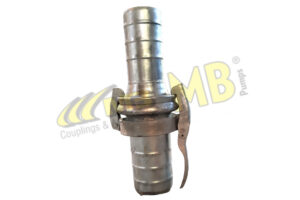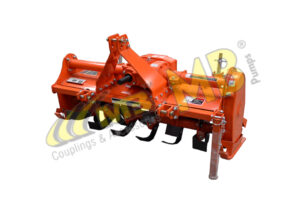What are Well-point Dewatering Systems? Let’s try to understand.
A wellpoint is a shallow, small-diameter well used to extract groundwater from a region. It is made up of a riser pipe that links the perforated pipe to a pump and is driven into the ground. Water is drawn up to the riser pipe and out of the wellpoint by the suction created by the pump. Consult the best Dewatering Pump Manufacturers in India for top quality products and services. Read the further information by MB Exports, India for wellpoint dewatering.
Applications for well-point dewatering systems are numerous and include:
- Construction: Dewatering pumps are utilised to keep excavations from flooding.
- Controlling water ingress into mines through mining
- Foundations: to prevent settling, the water table should be lowered around foundations.
- To drain groundwater from the tunnel face, tunnelling
- Refineries: to regulate leachate
- Using groundwater for irrigation is known as irrigation.
- hydro projects
- initiatives for water supply
- building of bridges
- Building a basement
- Construction of subterranean tanks
- Dewatering for farming
Although well-points work best in granular soils like sand and gravel, they can be used to a variety of soil types. In clay soils, they are less effective because the clay might clog the pipe’s perforations.
The spacing of well-points depends on the depth of the water table, the permeability of the soil, and the amount of water that needs to be removed. Typically, well points are spaced about 5 to 10 feet apart.
The pump that is used with a wellpoint can be a vacuum pump or a submersible pump. Vacuum pumps are typically used for shallow well points, while submersible pumps are used for deeper well points.
Well-points are a versatile and effective way to control groundwater. They are relatively inexpensive to install and operate, and they can be used in a variety of applications.
Thus, if you are looking for dewatering pumps for rent, choose Well-point Dewatering Systems if your site is suitable for it.
Additional Points About Well-point
- Steel or PVC are the usual materials used to make Well-point pipes.
- The diameter of the pipe’s perforations is normally 1/8 inch.
- Usually constructed of steel or PVC, the riser pipe has the same size as the pump.
- Usually housed in a sump or tank, the pump is attached to the riser pipe via a flexible hose.
- Usually, a header pipe connects the well points to one another.
- A flexible hose connects the header pipe to the pump.
The water that is extracted from the well points is released into a safe area by design of the wellpoint system. This could be a holding tank, a sewer, or a storm drain.
Wellpoints are an extremely powerful tool for managing groundwater. They do have some shortcomings, though. One of the problems with well-point dewatering devices is their loud loudness. They can produce a vacuum that can pick up dirt and debris, which is another disadvantage.
Advantages and Disadvantages of a Well-point System
Advantages:-
- comparatively cheap to set up and run: Installing and running well-point dewatering systems is not very expensive. The system’s size, the depth of the water table, and the soil’s permeability will all affect how much it costs. Still, well-point systems are usually less costly than alternative dewatering techniques like deep well pumping.
- Adaptable and suitable for a range of applications: Applications for well-point systems include tunnelling, construction, mining, irrigation, landfills, and foundations.
- They are a flexible choice that may be applied to a variety of locations for dewatering.
- Installing quickly in most ground conditions: In most ground conditions, well-point systems may be installed fast.In a few short days, the installation procedure can be finished because it is comparatively easy. They are therefore a viable choice for tasks where speed is of the essence.
- Simple to maintain: It’s not too difficult to maintain well-point dewatering systems. The pump and well points only need to have their leaks checked as part of routine maintenance. The project owner or a trained technician can complete this.
- Suitable for both modest and large-scale projects: Well-point systems can be applied to projects of any size. Depending on the requirements of the project, the system’s size will change. On the other hand, well-point systems are a scalable solution that can be tailored to any project’s requirements.
- Self-jetting well points made of steel can also be used; these are useful in situations when headroom is scarce and can be reused. One kind of reusable well point is the steel self-jetting well point. Because of this, they are an affordable choice for projects requiring repeated removal and installation of the well points. Because they don’t require a big excavation to install, they are also useful in settings with low headroom.
Disadvantages:-
- Can be noisy: The pumps in well-point systems, in particular, can be noisy. This might be an issue in neighbourhoods or other places where noise pollution is an issue.
- Can produce a vacuum that is capable of sucking up dirt and debris: The pump’s vacuum can draw dirt and debris into the well points. This may hinder the well points’ efficacy by clogging them.
- Not as useful on soil made of clay: In clay soils, well-point systems perform less well than in granular soils. This is a result of clay soils’ decreased porosity, which makes them more likely to block well points.
- It is possible that well-point systems will not be able to remove a significant volume of water. This is a result of the pumps’ restricted capacity to pump water.
- Needs constant pumping: In order to get water from the ground, well-point systems need constant pumping. This could be a concern in places where power outages happen frequently.
Conclusion
Overall, well-point systems are a versatile and effective way to control groundwater. They are relatively inexpensive to install and operate, and they can be used in a variety of applications. For more information contact the best Dewatering Pump Manufacturers in India
Read more about A Complete Guide to Wellpoint Dewatering Understanding




